Rolex’s strides in technical innovation
The Oyster Perpetual Day-Date is a horological breakthrough that continues to set standards
THE OYSTER PERPETUAL DAY-DATE was first designed as a special tool for everyday use. Today, this revolutionary watch continues to fascinate — nearly 7 decades later.
Rolex has called it “the ultimate prestige watch”, a description that speaks of values such as respectability, status and admiration. Sure enough, the Day-Date has been worn by presidents and business leaders; but it’s also spotted on the wrists of Hollywood movie actors, rock singers and famous sports personalities including Rolex Testimonees US former world champion skier Lindsey Vonn and Swiss tennis great Roger Federer — trendsetters for a wider audience.
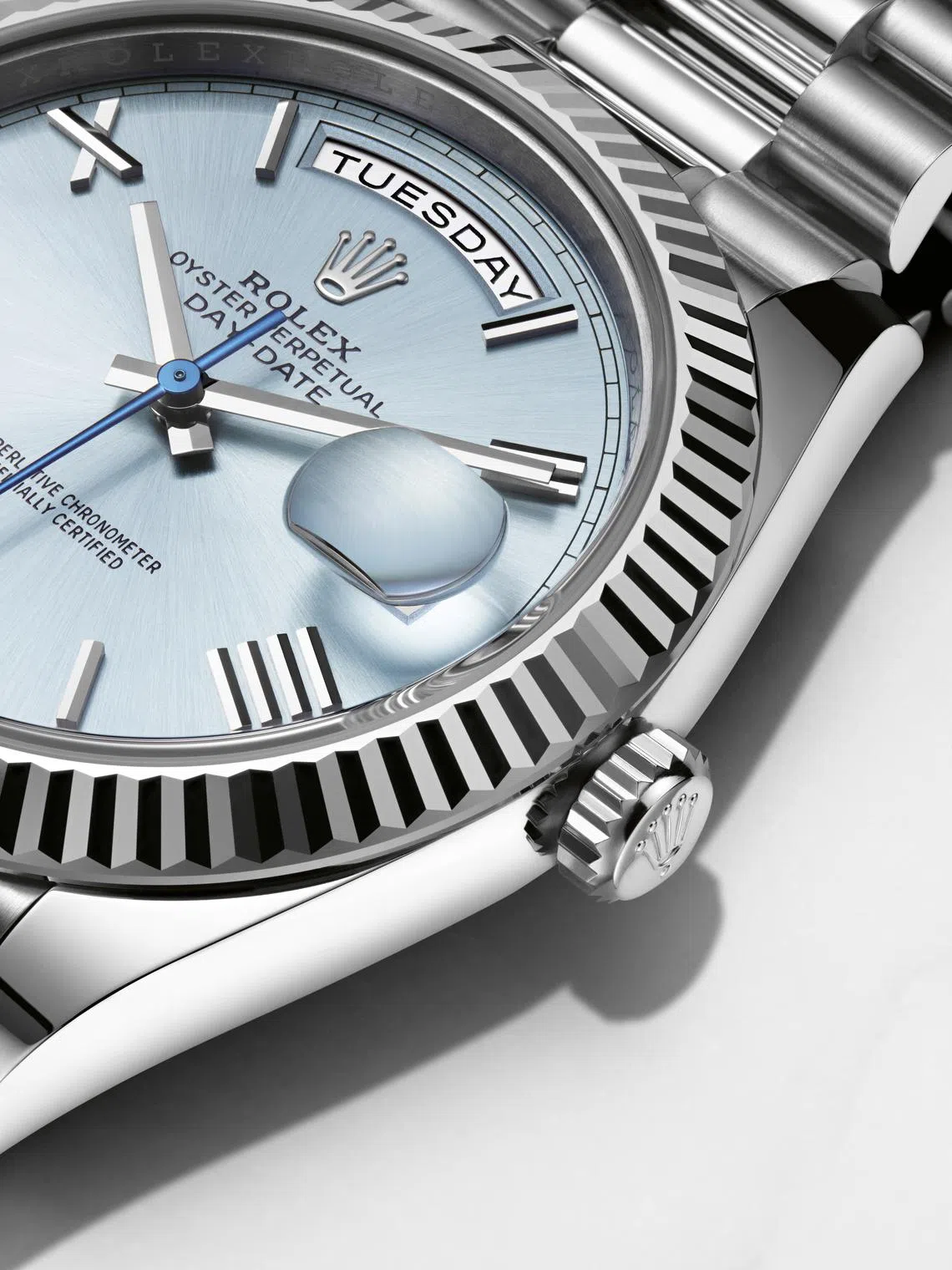
Horological breakthrough
Why is the Day-Date, a classic watch that tells the time, day and date, so popular with so many people from so many fields — and why does it appeal to so many others?
Snowball effect aside, there are deeper reasons that make the model a big hit. The Day-Date was, first of all, a huge horological breakthrough when it was launched in 1956. It came in the middle of major political, economic and social changes, when Rolex’s founder Hans Wilsdorf felt “dates and days are a necessity”. The Day-Date was the answer to his quest for a watch with a clearly readable day display, fitting for everyday reference.
As a major innovation, it was the first automatic waterproof chronometer timepiece to, in addition to the date, spell out the day of the week in full in an arc-shaped window at 12 o’clock on the dial — a technical feat then. At the stroke of midnight, the day and date on the dial change at the same time in their respective windows. This “miracle of midnight” was the fruit of numerous years’ research that yielded 4 patents for watches featuring an indication of day and date.
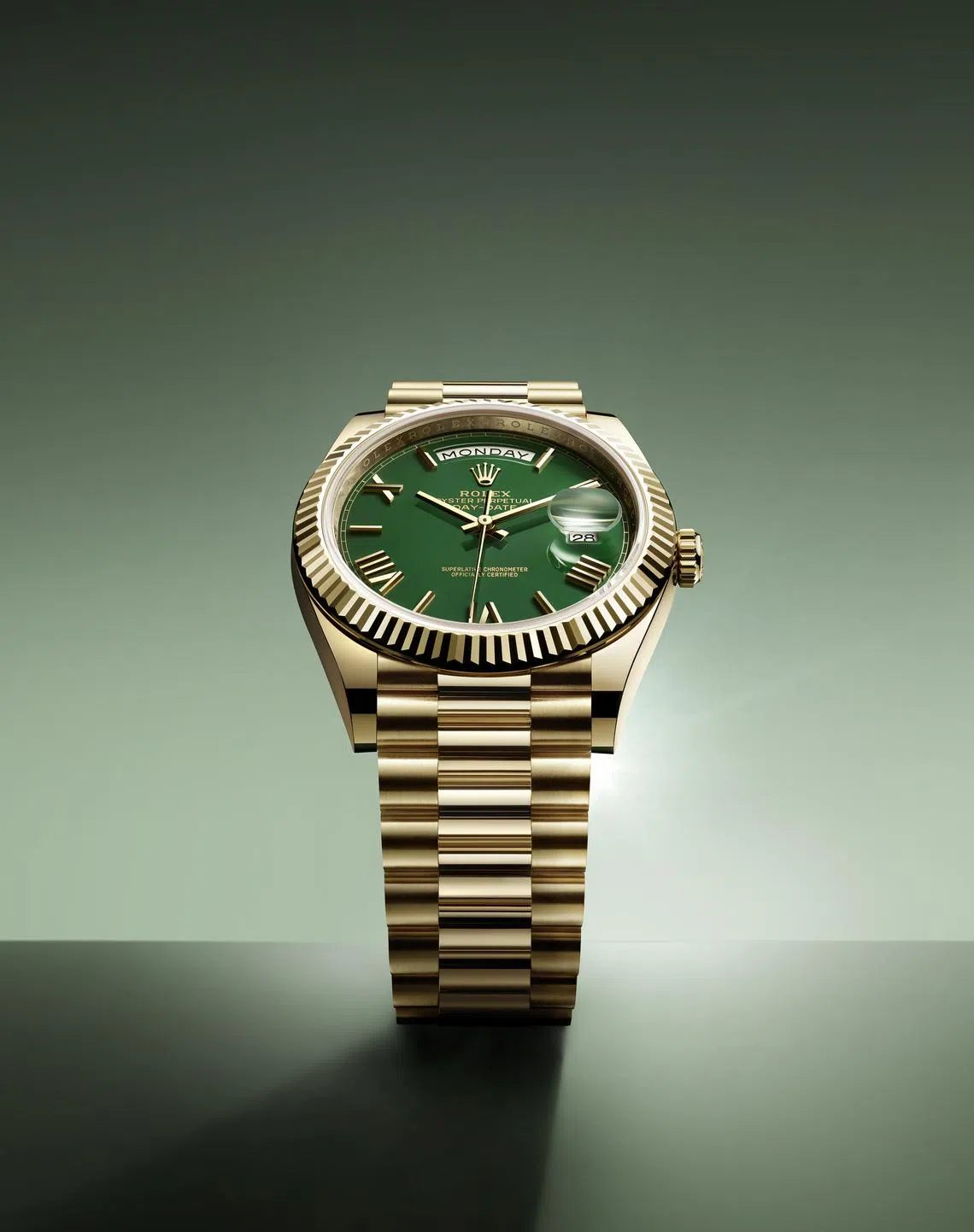
The day of the week is available not just in English, but also in a choice of 25 other languages, including Arabic, Basque, Indonesian, Chinese, Finnish and Japanese.
Added prestige
Living up to the image of a watch with great standing, the Day-Date comes only in 18 carat gold — yellow, white or Everose (Rolex-speak for rose gold) — or 950 (high grade) platinum.
Then, of course, there’s the 3-piece link President bracelet, created for the roll-out of the Day-Date 66 years ago. It has a concealed crown-clasp and is opened with a hinged Rolex crown. The links hold ceramic inserts inside them, which make the links last longer and more flexible. The President bracelet is still kept exclusively only for the Day-Date and the precious metal models of Rolex’s Datejust collection.
This year, Rolex has further introduced a fluted bezel in platinum for the 950 platinum version of the Day-Date 40 — a first for the brand.
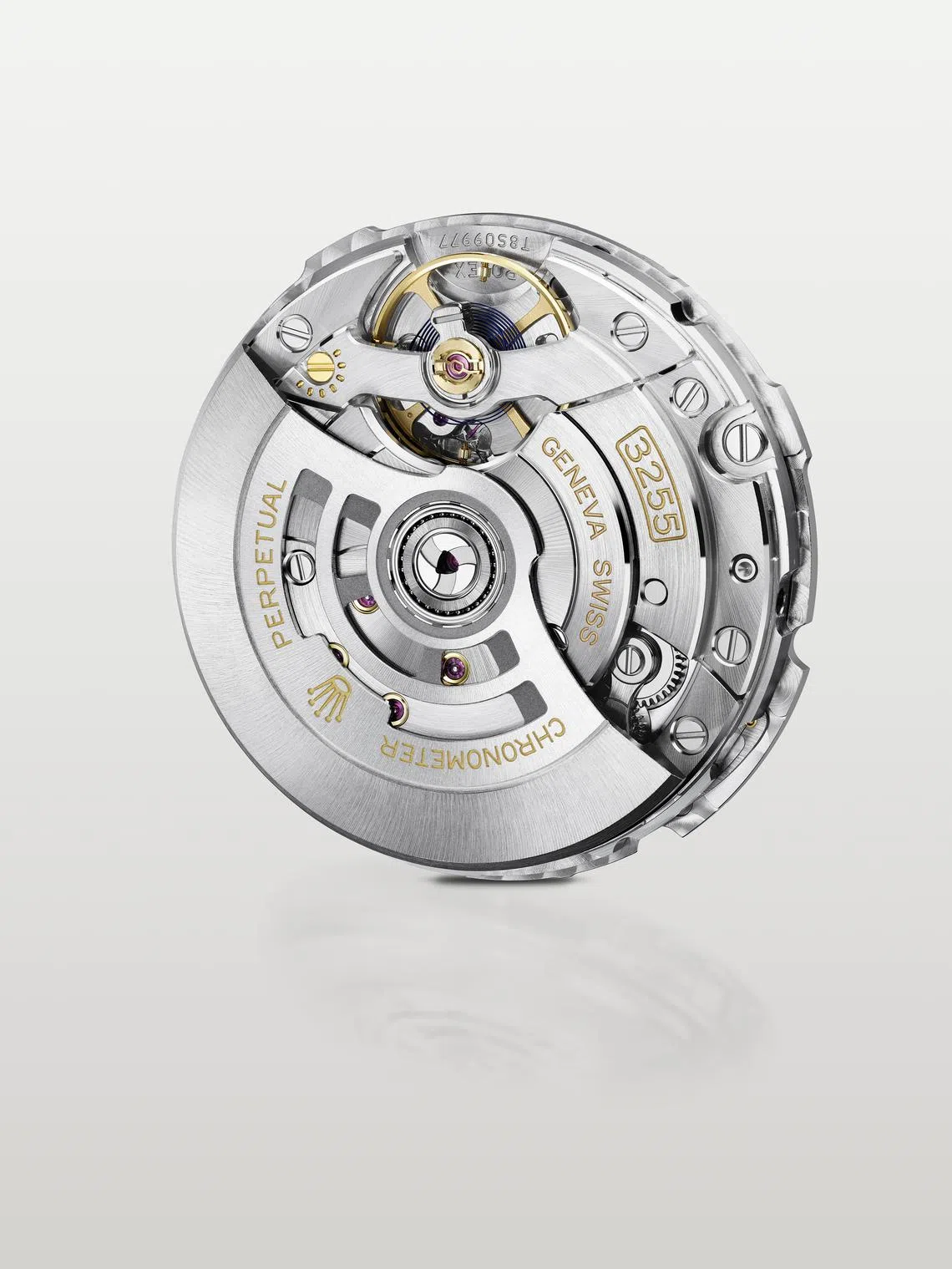
While a material of exceptional brilliance that emits a captivating white glow, platinum is challenging to work with, especially in the finishing. Which is why the fluted bezel has been crafted only in 18 ct gold. This is no longer the case. Rolex has now discovered an innovative manufacturing process to create a fluted bezel in 950 platinum.
The timing was perfect. Until new fixation techniques were developed recently, the fluted bezel had served to secure the bezel on the case of Rolex watches to ensure the watches were waterproof. Now the fluted bezel, a cornerstone of Rolex’s aesthetic heritage, adds prestige to the watch.

The Day-Date’s Oyster case, 36mm or 40mm wide, is guaranteed waterproof to 100 metres deep. The middle case is crafted from a solid block of 18 ct gold or 950 platinum. The case back, edged with fine fluting, is hermetically screwed down with a special tool accessible to only certified Rolex watchmakers. Attached to a double waterproof system, the “Twinlock” winding crown on the side is screwed down securely against the case. The bezel rimming the case is fluted or adorned with diamonds; while on the scratch-proof sapphire crystal case cover, at 3 o’clock, a Cyclops lens enlarges the date display.
State of the art
The Day-Date models are powered by a state-of-the-art automatic movement that’s totally developed and made in-house by Rolex. The movement, calibre 3255, is certified by the Swiss Official Chronometer Testing Institute (COSC) as well as Rolex itself for outstanding performance in precision, power reserve, shock resistance, convenience and reliability. It carries a number of patents, including an oscillator fitted on high-performance “Paraflex” shock absorbers.
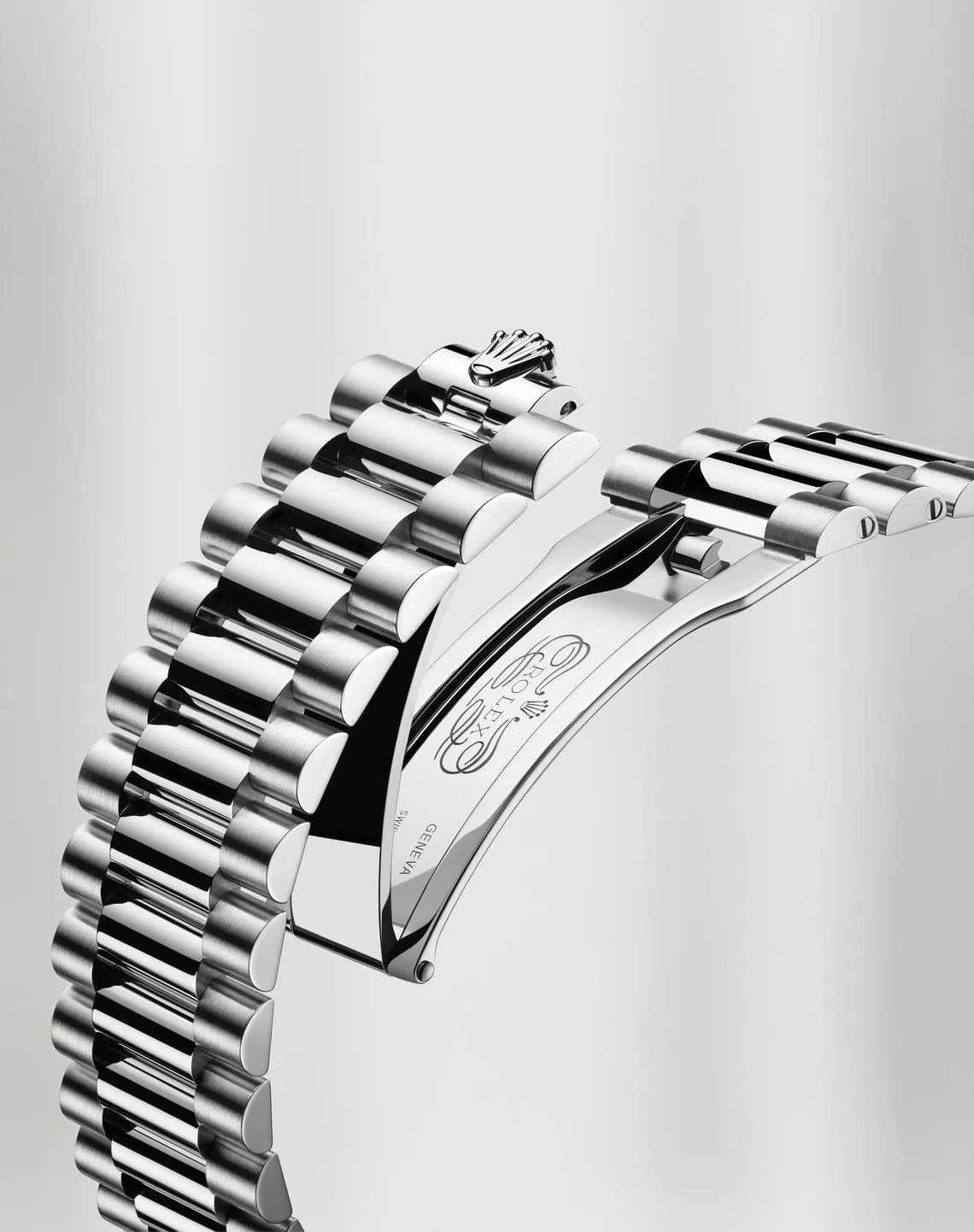
There’s also a patented “Chronergy” escapement, made of nickel-phosphorus, which combines high energy efficiency with great dependability and is further insensitive to magnetic fields. Rolex’s highly stable blue Parachrom hairspring, made in a paramagnetic alloy, is also unaffected by magnetic fields as well as temperature changes. The colour of the Parachrom hairspring is caused by the surface treatment process used to boost its stability. Such blue hairsprings have been used only for the movements of the most precise and exclusive timepieces.
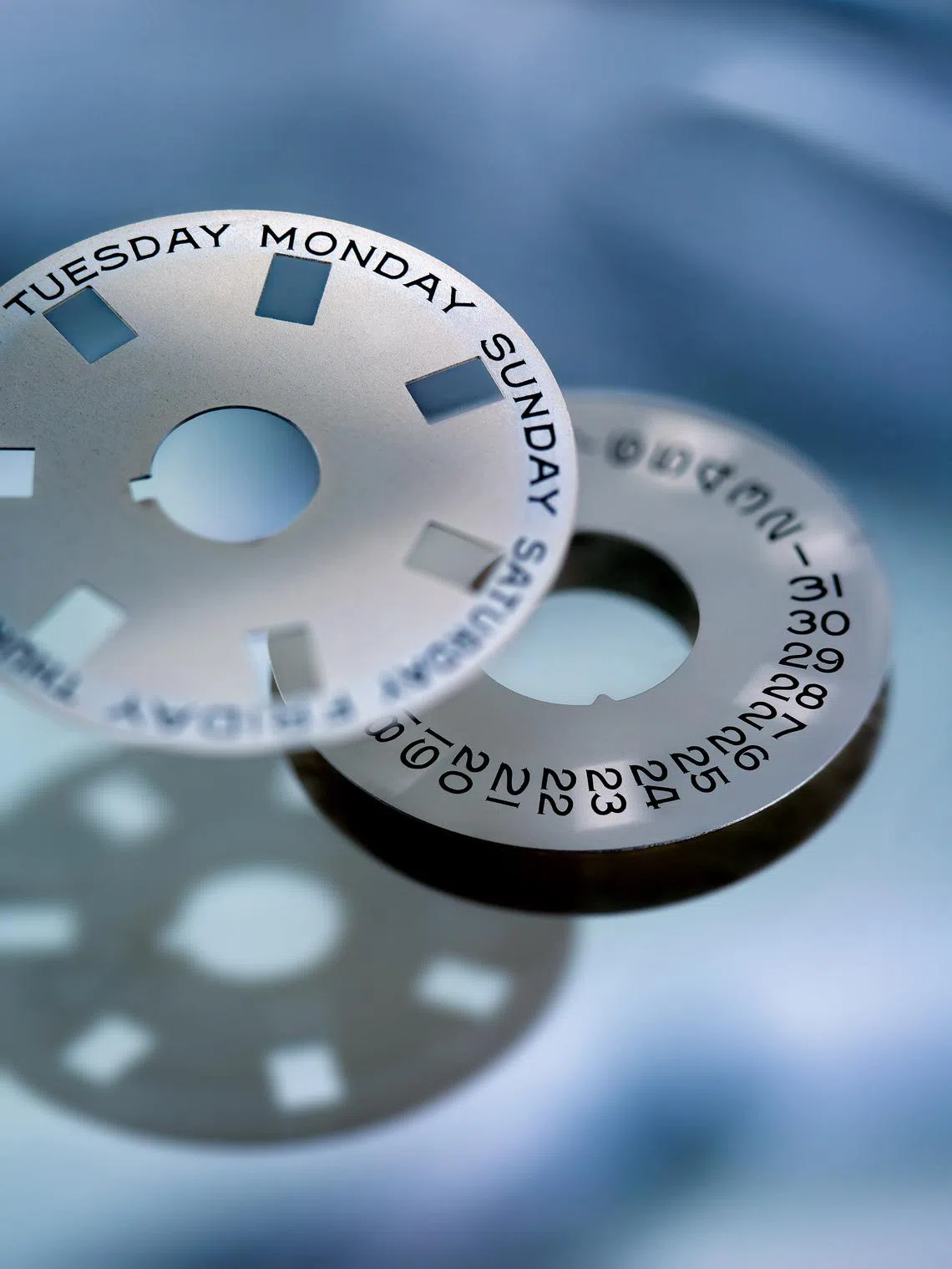
Like all Rolex watches, the Day-Date is covered by the brand’s Superlative Chronometer certification. This proves that every timepiece leaving Rolex’s workshops has passed a second series of tests that, among other things, ensure that the precision of its movement meets criteria far stricter than those set by COSC. The precision of the Superlative Chronometer is of the order of minus 2/plus 2 seconds per day — that is, the watch should not be slower or faster by more than 2 seconds a day — against COSC’s minus 4/plus 6 seconds per day.
Decoding Asia newsletter: your guide to navigating Asia in a new global order. Delivered to your inbox. Free.
Copyright SPH Media. All rights reserved.





